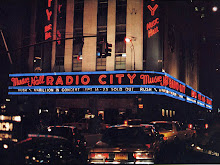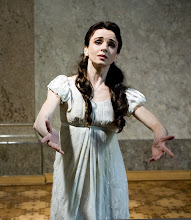 In my opinion, it was the most significant music project of the 1980s, by any rock band.
In my opinion, it was the most significant music project of the 1980s, by any rock band.The Joshua Tree, U2's 1987 epic, just got even better when it was released last November in a remastered edition to celebrate the 20th Anniversary of its release.
You can pick it up in a single disc version, a 2-CD version with B-sides, outtakes and different versions of songs from the album sessions, or a 3 disc boxed set with the 2 CDs and a concert DVD from the tour that followed the original album release...
So there's something for everyone; just have your pick and enjoy the superb remastered sound quality! It's a big improvement, in my opinion. A HUGE improvement. Now they just need to release it in a 5.1 surround sound version, but that's another "filler for audiophile story" for another day...
For me, this recording has a very personal leaning. I'll focus on that right now and leave the other angles on the subject matter of the album to the next guy...
The album came out during a time of my life when I was in transition; graduating from high school and experiencing the gift and freedom of going out of the Seattle area, out of state to Arizona, for my freshman year of college. The summer of 1987, when I first heard The Joshua Tree, was also a bittersweet time for me as I'd lost my maternal grandmother the day after graduation. The music, with its southwestern themes, beckoned me and enhanced the possibilities that lay ahead as I got ready for the day I would fly to Phoenix to start a new chapter in my life.
The Joshua Tree helped provide a soundtrack for my introduction to Arizona and the American southwest as I began my first year of college at Arizona State. For me, the imagery of The Joshua Tree is the beautiful desertscapes of Arizona and the drive through the desert along Interstate-10 as you go west toward Los Angeles. I've lost count of the number of times I've spun the disc on that drive... it's a required listen on that stretch of I-10, and you can usually fit it in during the near-7 hour trip.
It brings back that summer after high school and my first year of college... the transitions that took place, and the people that affected me at the time. It's part of the soundtrack of my life.
If you're headed west on I-10, try to throw it on when you cross the state line into Arizona and the saguaros of the Sonoran Desert start coming into view... it will send shivers up your spine.
So those are my thoughts... here's an excerpt from the disc booklet that's of interest. S
The Joshua Tree made U2 into international rock stars and established both a standard they would always have to live up to and an image they would forever try to live down.
Both things have been very good for the band. With The Joshua Tree U2 reached the top of the mountain.
Some artists get to the top of the mountain and come back down. Some fight to stay there. U2 got to the top of the mountain and used it as a place to build a launching pad.
U2 were barely out of their teens when they released their first album, Boy, in 1980. October followed the next year and then War, with its fist-in-the-air anthems, alerted the guard dogs of the rock world - radio, press, and retail - that a big new act was blooming.
Bono has pointed out that U2 benefited here from the coincidence that most of the other bands who were ahead of them in the punk /new wave queue - The Clash, Talking Heads, Police, Pretenders - chose this moment to take a powder. An audience for new rock music had been building for more than five years and suddenly U2 were at the front of the line. They grabbed that energy and used it for rocket fuel.
But first they took a step sideways. The Unforgettable Fire (1984) was not the anthemic stadium rock monster that the group's label - and perhaps a lot of their fans - had expected and hoped for. Rather than go in and make a Who /Led Zeppelin record, U2 chose to work with the conceptualist producer Brian Eno and his confederate, multi-instrumentalist Daniel Lanios to do something more subdued and experimental.
It turned out to be a smart move - it deepened U2's relationship with their audience before the big step forward and served notice that this was a band with ambitions beyond record sales. Unforgettable Fire was a bigger hit than U2 had enjoyed to date - the group's momentum was unstopped - and it contained their first big hit single, "Pride (In the Name of Love)."
"Pride" - a rousing celebration of the vision of Martin Luther King - was slightly out of place on The Unforgettable Fire, but it provided a blueprint for the broad-shouldered, big screen American visions of The Joshua Tree.
 U2 had spent a tremendous amount of time in the USA in the first half of the eighties. What they saw through bus windows and in the gas stations, motels and theaters along the way shaped the new music they wrote. Bono and Edge were influenced by the wasteland western plays of Sam Shepard as well as the European lost-in-America imagery of films like Wim Wenders' Paris, Texas.
U2 had spent a tremendous amount of time in the USA in the first half of the eighties. What they saw through bus windows and in the gas stations, motels and theaters along the way shaped the new music they wrote. Bono and Edge were influenced by the wasteland western plays of Sam Shepard as well as the European lost-in-America imagery of films like Wim Wenders' Paris, Texas. What came out were songs that dealt less with America the country than with a mythic America of the imagination. In that way, U2 were following in the footsteps of their fellow Irishman Sean Feeny - who as John Ford made films like Fort Apache, The Searchers, and The Man Who Shot Liberty Valance, that turned the desert vistas of the southwest into a landscape for stories about temptation, redemption, and the power of myth to ennoble or destroy.
The hit singles from The Joshua Tree - "Where the Streets Have No Name," "I Still Haven't Found What I'm Looking For," and "With or Without You" all have titles that sound like lines John Wayne would say in a John Ford film. They suggest a quest, a journey out into the territories...and yet the heart of the album is two songs that were not hit singles, but which have endured over twenty years as the centerpiece of countless U2 concerts - "Running to Stand Still" and "Bullet the Blue Sky." One is a whisper, the other an explosion and together they demonstrated how deep U2 were prepared to go.
"Running to Stand Still" was inspired by an epidemic of heroin use in Dublin. The story in the song is of a couple who decide to risk everything on a big drug deal. They pretty much know going in that they don't have a chance of coming out. "Bullet the Blue Sky" is about the American-backed insurgency that was at that time trying to overthrow the leftist government of El Salvador. Bono and his wife Ali got caught on the edge of a firefight during a visit to Central America, and he came back with the idea for that song - an indictment of U.S. power turned against its neighbors. Famously, Bono asked Edge to put the war through his amplifier.
What makes those songs stand up twenty years later is that you don't need to know any of that history. "Running to Stand Still" is for anyone who feels trapped in an impossible circumstance by overwhelming responsibility. "Bullet the Blue Sky" is as true in Iraq as it has been in Bosnia, Chechnya, Rwanda or Darfur since the music was first played.
Produced by Eno and Lanois (with some umpiring by U2's original producer, Steve Lillywhite), The Joshua Tree sold more than twenty million copies, won the Album of the Year Grammy, went to number one around the world, and put U2 on the cover of Time magazine - but it did a lot more than that.
The Joshua Tree put U2 into a pantheon that very few bands of their generation ever reached and that no other band of their generation stayed in. It put U2 on the mountain with The Stones, The Who, Hendrix, Springsteen and Zeppelin. It put them on top of the world.
It is to U2's great credit that when they got to the top of that mountain, they refused to be set in stone. They wanted to see some other views. So after the victory lap that was Rattle and Hum, they headed for the new horizons of Achtung Baby and Zooropa. Asked what the sound of their new record would be in 1992, they famously said, "It's the sound of four men chopping down The Joshua Tree."
by Bill Flanagan, 2007






















No comments:
Post a Comment